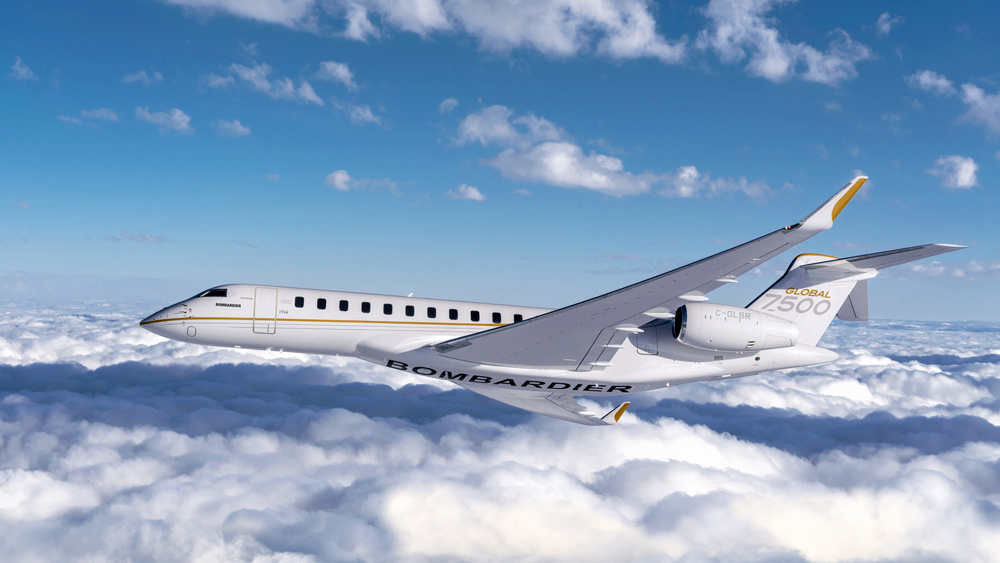BOMBARDIER LEADS THE CHARGE FOR INCREASED ADOPTION OF SUSTAINABLE ALTERNATIVE JET FUEL

The business aviation industry has a superior – though little known – record of environmental stewardship. As an industry, fuel efficiency has improved 40% over the last 40 years. And business aviation is actively working to further reduce its environmental impact. From constrained resources to regulatory pressures, the industry is actively collaborating and innovating to pave the way to cleaner skies, and Bombardier Business Aircraft is leading the charge.
Exactly a decade ago, the General Aviation Manufacturers Association (GAMA), established its Environment Committee to represent the industry’s environmental objectives, establish policies, and develop a suitable framework to achieve these goals.
The Environment Committee, chaired by Bombardier Business Aircraft President David Coleal, has a critical mandate: it is charged with ensuring GAMA members are full and active participants in shaping general aviation’s environmental impact and initiatives.
An industry with a vision
In 2009, GAMA and the International Business Aviation Council (IBAC) -- the organization representing business jet operators at the International Civil Aviation Organization (ICAO) -- jointly announced the Business Aviation Commitment to Climate Change (BACCC)—a global, industry-wide commitment to mitigating climate change. The BACCC was developed in support of ICAO’s Declaration on International Aviation and Climate Change, responding to a need for a global sectoral approach in the wake of the Kyoto Agreement. Similar to the airline community, business aviation committed to three targets:
Improve fuel efficiency 2% per year from 2010 until 2020;
Achieve carbon-neutral growth from 2020, and;
Reduce carbon dioxide (CO2) emissions 50% by 2050 relative to 2005.
Bombardier played a leading role in this initiative, and in collaboration with many organizations across the industry, designed a path to achieve these goals across four pillars:
Technology
Infrastructure and operational improvements
Market-based measures
Alternative fuels
On the technology side, the industry continues to make huge strides in aircraft efficiency, as OEMs invest and innovate. New engines and advancements in aerodynamics contribute to delivering reduced fuel burn – benefitting both the environment and customers.
A great example of technological advancement is the recently launched Global 5500 and Global 6500 business jets. Thanks to redesigned wings and brand-new, purpose-built Rolls-Royce Pearl engines, the Global 5500 and 6500 aircraft are up to 13% more efficient than their predecessors, the Global 5000 and Global 6000 aircraft.*
Global market-based measures, such as ICAO’s Carbon Offsetting and Reduction Scheme for International Aviation (CORSIA) program, are used to offset CO2 emissions jointly with improvements across the other pillars. Progress in implementing infrastructure and operational improvements has been slower, and the continued collaboration of all stakeholders is vital to success.
Into the spotlight
The one area where the entire industry is lagging concerns the development, availability and adoption of sustainable alternative jet fuel (SAJF), a class of non-petroleum-based jet fuels (or blended components). SAJF is significantly cleaner than conventional fuel. SAJF is derived from elements ranging from cooking oil, plant oils, solid municipal waste, waste gases, sugars, purpose-grown biomass, and agricultural residues — many of these contribute to reducing CO2 throughout their lifecycle. So relative to fossil fuels, which are CO2 intensive to produce as well as to burn, sustainably-produced, unconventional jet fuel results in a net reduction in CO2 emissions across its life cycle, even when considering emissions produced in growing, transporting, harvesting, processing, and refining a particular feedstock used in production.

SAJF is safe. It has undergone rigorous testing and have been approved to the stringent requirements of the American Society for Testing and Materials D7566 jet fuel specifications. SAJF is certified as “drop-in”, or ready-to-use. It possesses similar properties, qualities and characteristics as Jet A and Jet A-1 fuel, so aircraft perform the same under all conditions— operators do not have to fly differently and no modifications to aircraft equipment are needed. Because in-service aircraft are ready and able to fly with SAJF today, current products can make a positive impact as early as now.
And yet a challenge of misconception still exists: trust in SAJF is low, while skepticism is high. In May 2018, GAMA, IBAC, the National Air Transportation Association (NATA), the National Business Aviation Association (NBAA) and the European Business Aviation Association (EBAA) united to launch an industry-level initiative to dispel the myths surrounding SAJF, to make it better understood and, ultimately, to increase adoption. The Business Aviation Guide to the Use of Sustainable Alternative Jet Fuel (the Guide) was published to engage industry partners, customers, suppliers and stakeholders at large towards making alternative fuel a regular ingredient in takeoffs and landings everywhere.
Looking ahead
Following the publication of the Guide, the industry recognizes that there is more work ahead. In the coming months, pilot programs are planned to demonstrate the viability of alternative fuels at select business aviation airports. Stay tuned – SAJF may be coming to an FBO near you.


Comments
Post a Comment